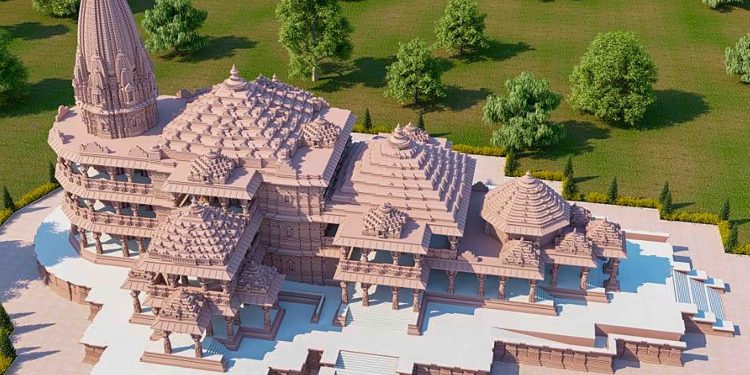Ayodhya: The much-awaited construction of the Ram temple in Ayodhya will begin after September 17 when the ‘Pitra Paksh’ period ends.
Pitra Paksh refers to the period when Hindus express gratitude to their ancestors and no auspicious work is done during this period.
According to Shri Ram Janmabhoomi Teerth Kshetra Trust general secretary, Champat Rai, country’s leading construction company Larsen and Toubro is all set to lay the foundation of the grand temple, which would come up in 12,879 square metre area on Ram Janmabhoomi campus.
The company is carrying out construction without charging any fee. Around 1,200 pillars will be laid around 100 feet below the surface to prepare the temple’s foundation. These pillars will be of stone and no iron will be used. Again, on these pillars, another layer of foundation will be laid.
The construction company has sourced machines from Mumbai and is in the process of sourcing machines from Hyderabad.
The Trust is expected to engage around 100 labourers to lay the foundation of the temple.
All workers will be tested for the coronavirus and thermal-scanned before being allowed entry into the Ram Janmabhoomi campus.
Last week, the Ayodhya Development Authority (ADA) had approved two layouts — one of Ram mandir and another of the entire Ram Janmabhoomi campus.
The ADA also handed over the layouts to the Trust on September 4 after it deposited requisite fee in the development authority’s bank account.
The proposed Ram mandir will be 360 feet long, 235 feet wide and 161 feet high and will have five domes.
According to the Trust, the temple’s foundation will be laid by using modern techniques so that it could be preserved for over 1,500 years and its structure for 1,000 years.
Experts from the Central Building Research Institute (CBRI), Roorkee and IIT Madras have been roped in to make the temple’s foundation strong so that it can withstand earthquakes and storms.
IANS







































